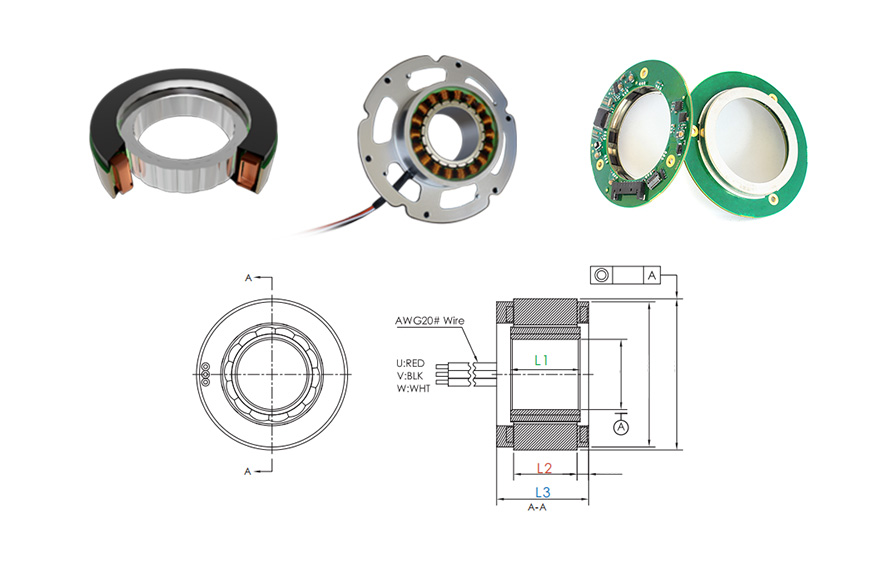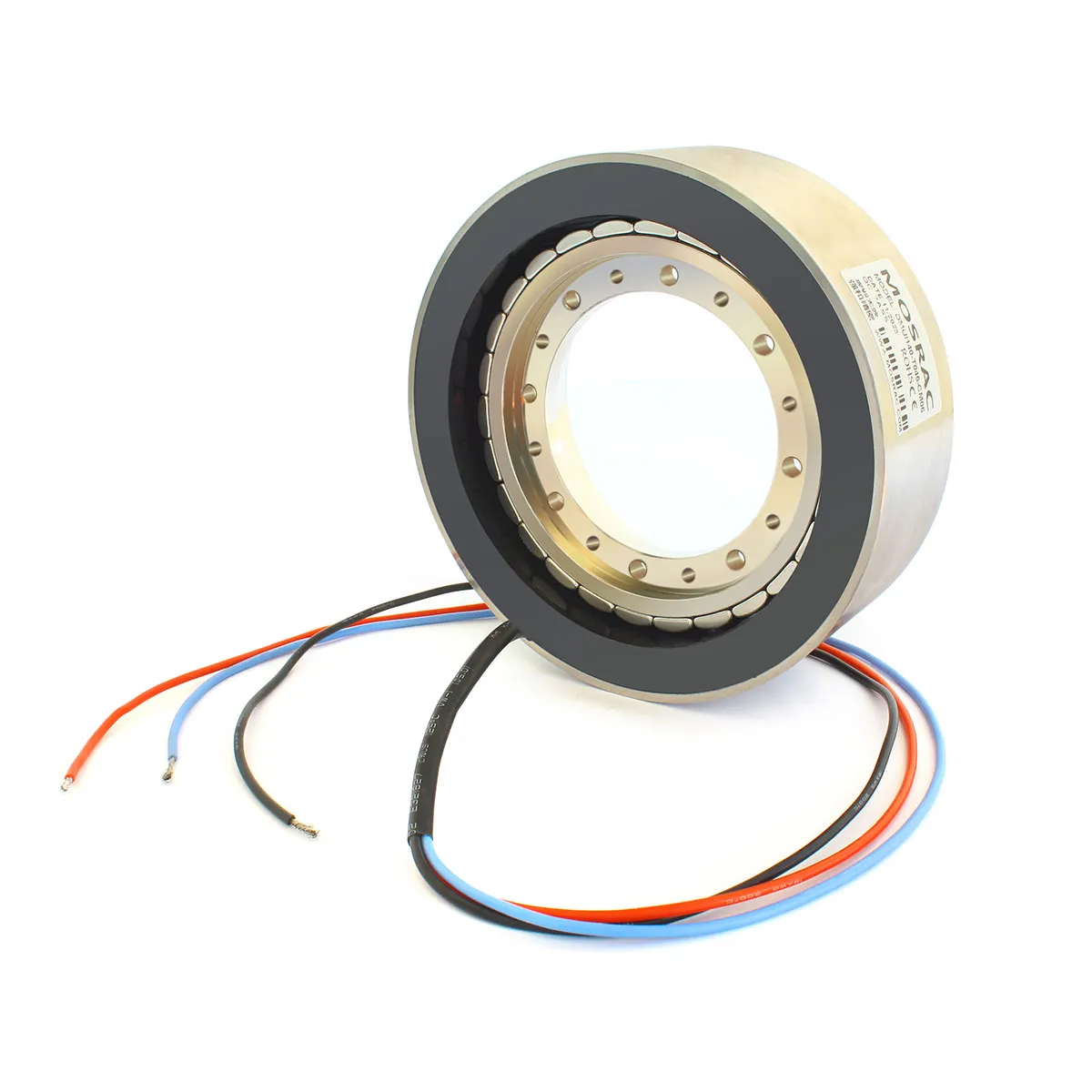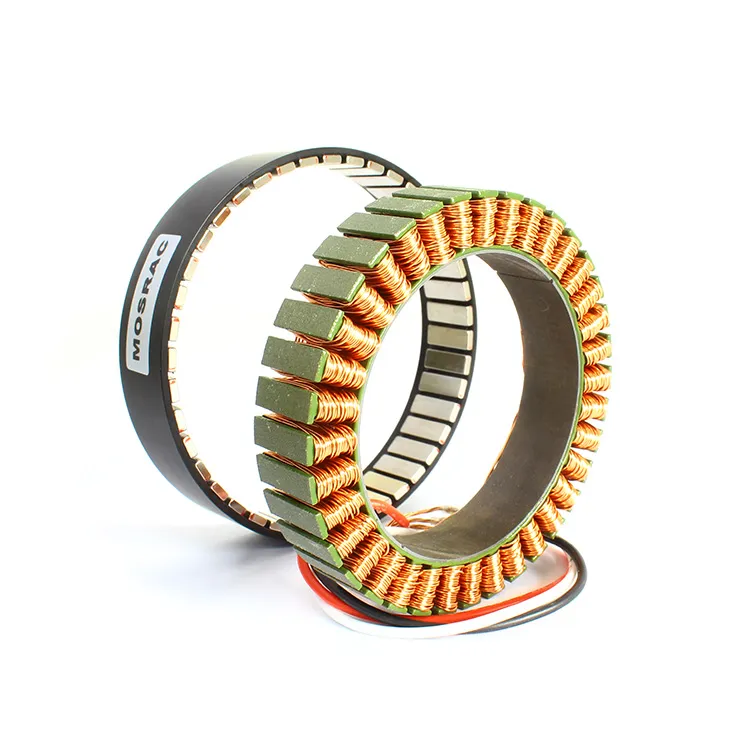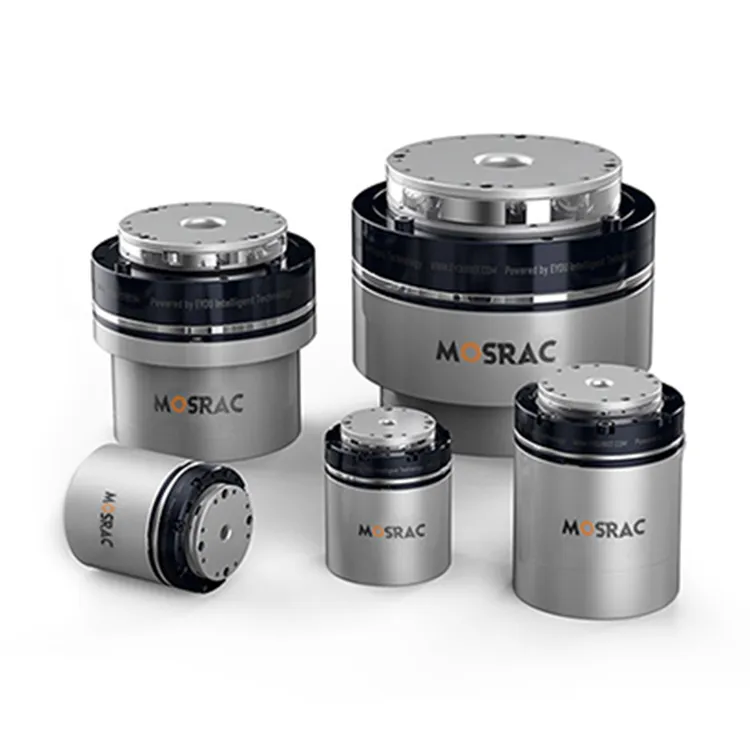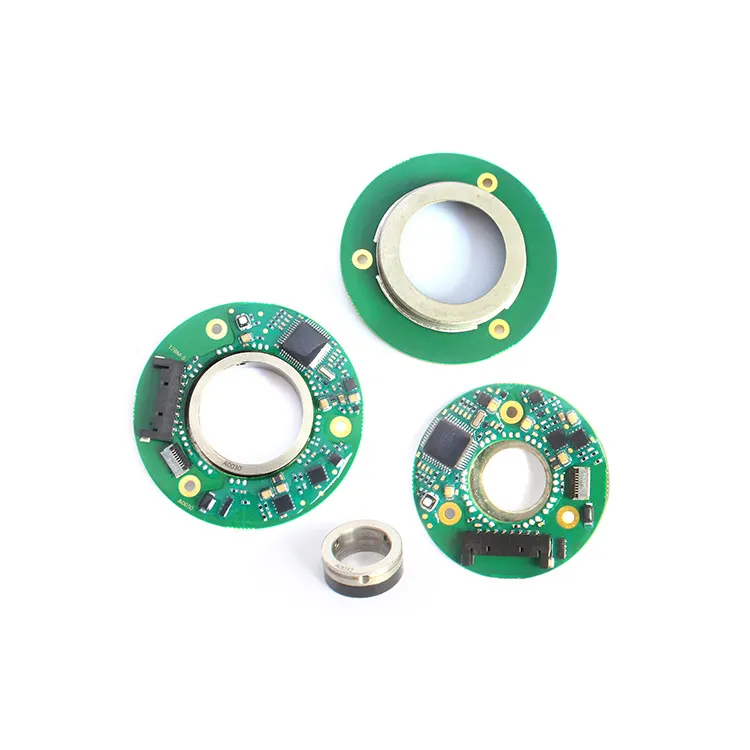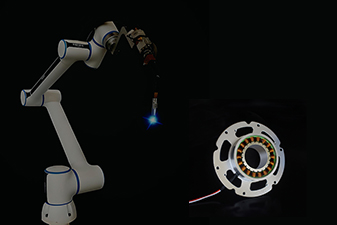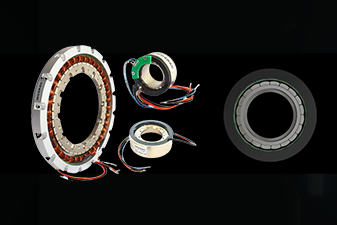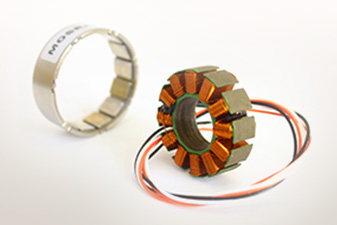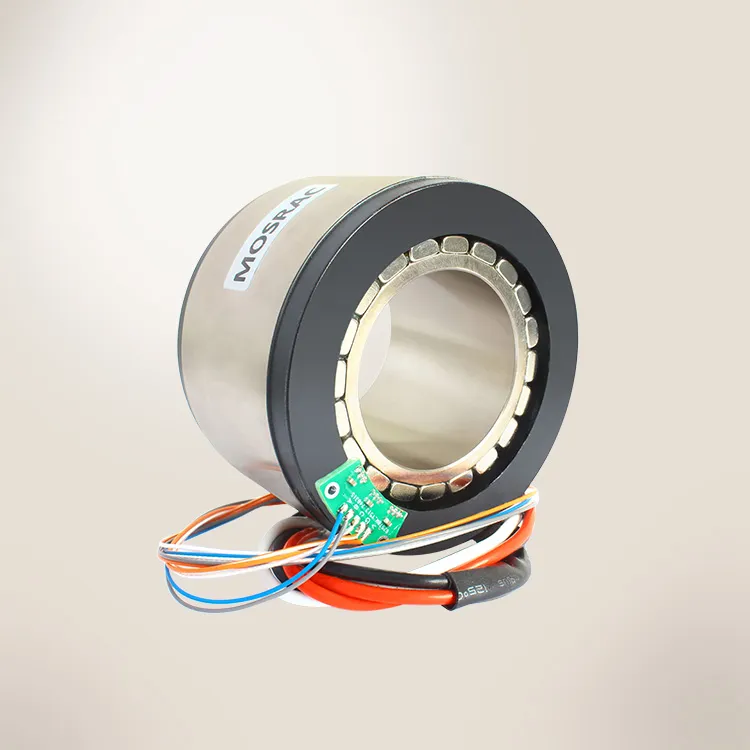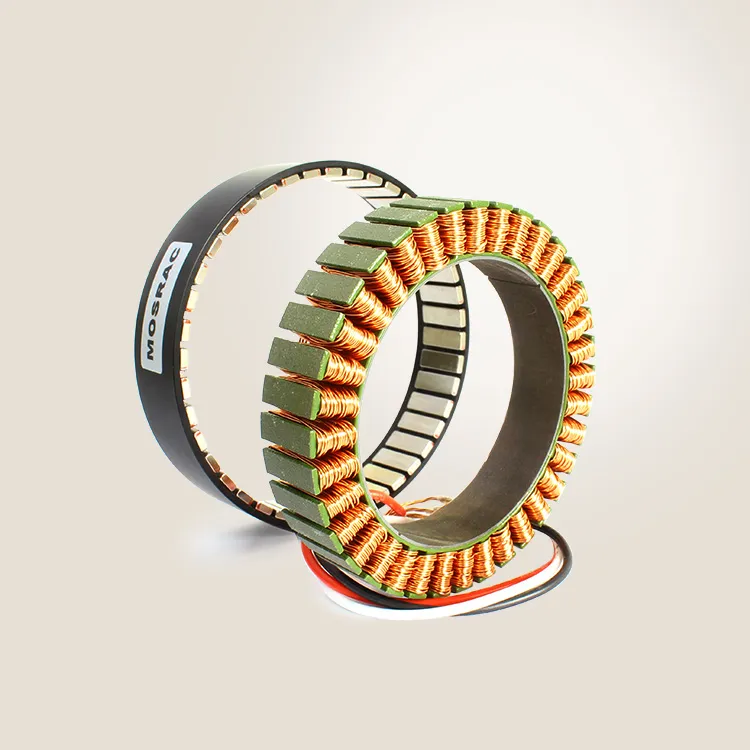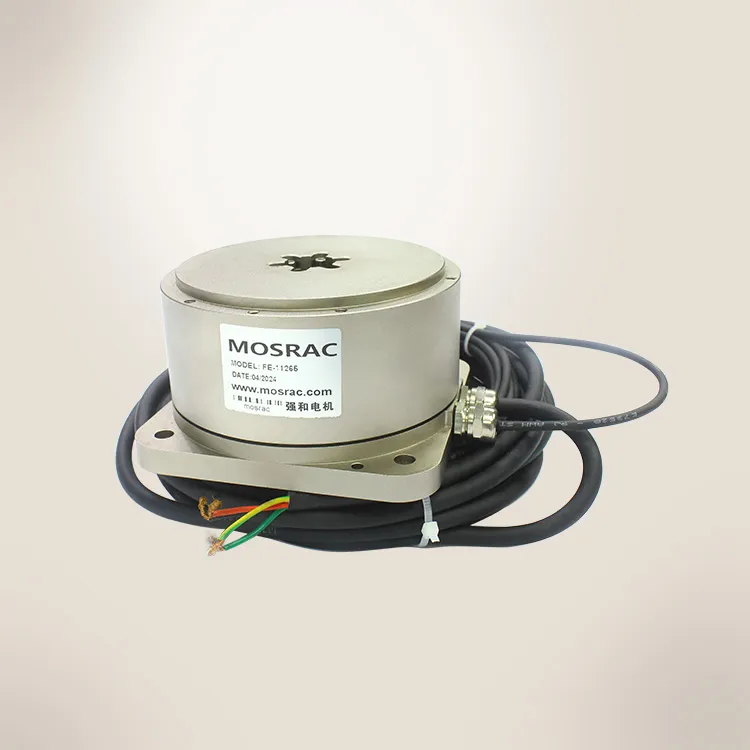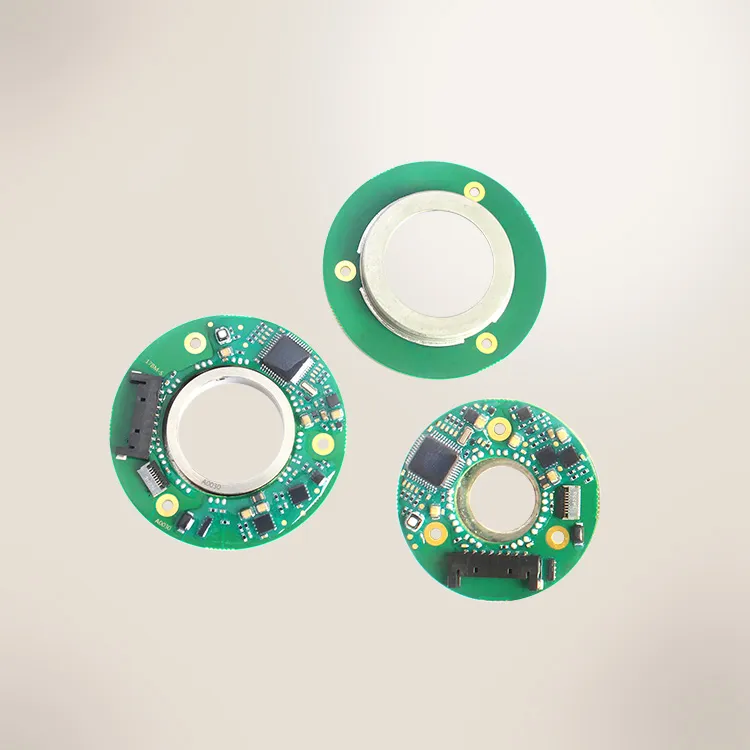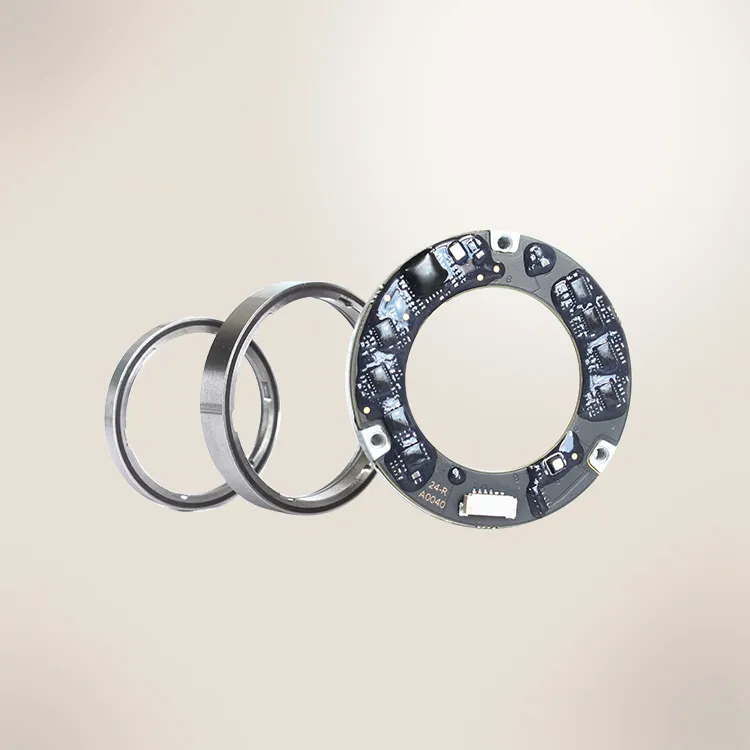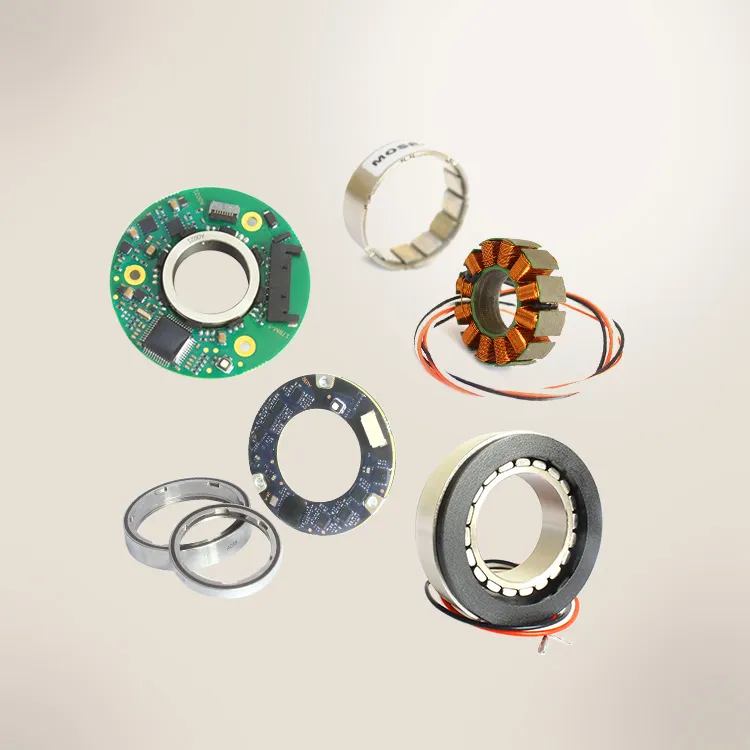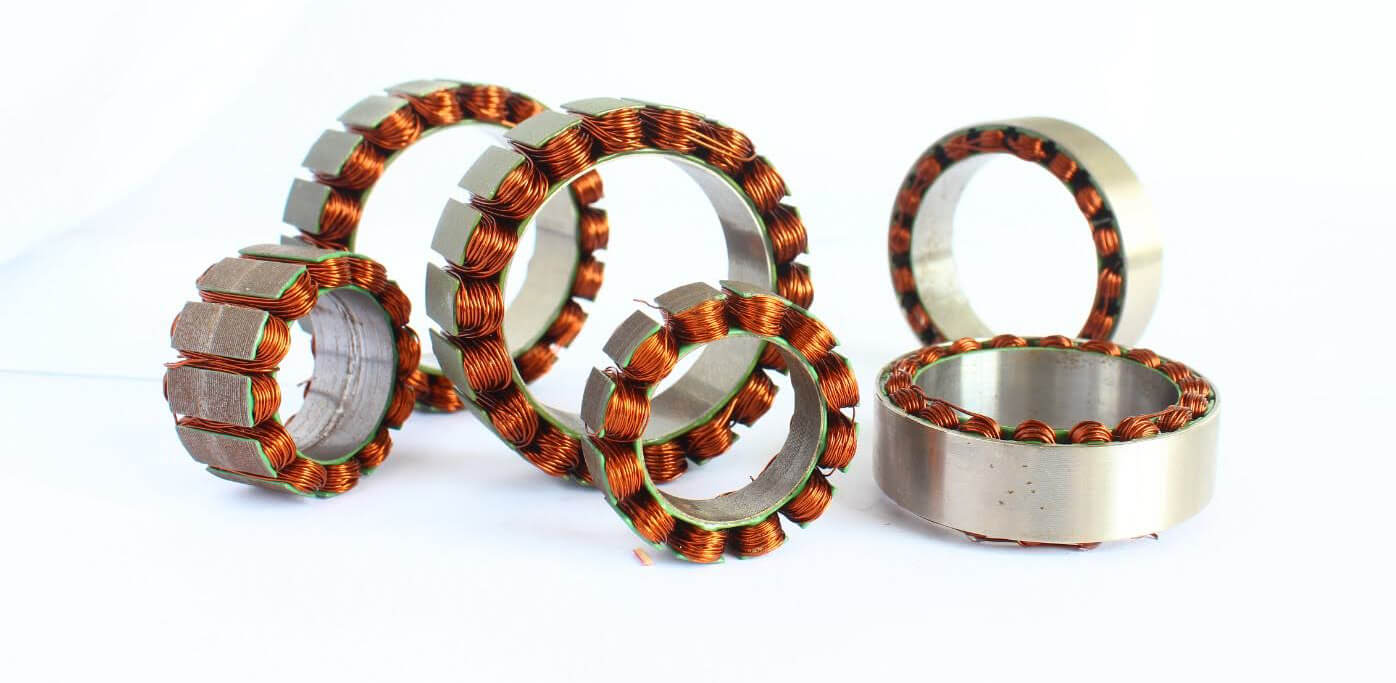
Copper Coil Winding in Electric Motors
Introduction
Motor windings are the heart of every electric motor, directly influencing efficiency, power output, and reliability. These conductive coils generate electromagnetic fields that drive motion, making them essential in industries like robotics, automotive, aerospace, and renewable energy!
The choice of motor windings affects torque delivery, heat dissipation, and overall lifespan. Advanced winding technologies, such as precision-engineered coils and custom motor windings, enhance performance for specialized applications.
Mosrac provides cutting-edge solutions to meet diverse requirements, helping industries make informed choices between motors, based on their unique applications!
Classification of Motor Windings
Motor windings play a critical role in defining the performance and efficiency of electric motors.
They are classified based on their position in the motor structure and their function in generating and managing the electromagnetic field.
The two primary classifications are stator vs. rotor windings and armature vs. field windings.
Understanding these distinctions is essential when selecting the right motor windings for specific industrial applications, ensuring optimal performance and energy efficiency.

Rotor detail of Frameless Electrical Motors
Stator vs. Rotor Windings
In electric motors, motor windings can be categorized as stator windings and rotor windings, based on their location and function within the motor structure.
▪︎ Stator Windings: These windings are placed in the stationary part of the motor, known as the stator. They generate a rotating magnetic field when supplied with electrical current. The stator windings are commonly found in AC induction motors, synchronous motors, and brushless DC motors (BLDC motors).
▪︎ Rotor Windings: Located in the rotating part of the motor, known as the rotor, these windings either induce a current (in the case of induction motors) or receive direct excitation (in the case of synchronous motors). The rotor windings interact with the magnetic field generated by the stator, creating motion through electromagnetic induction or direct excitation.
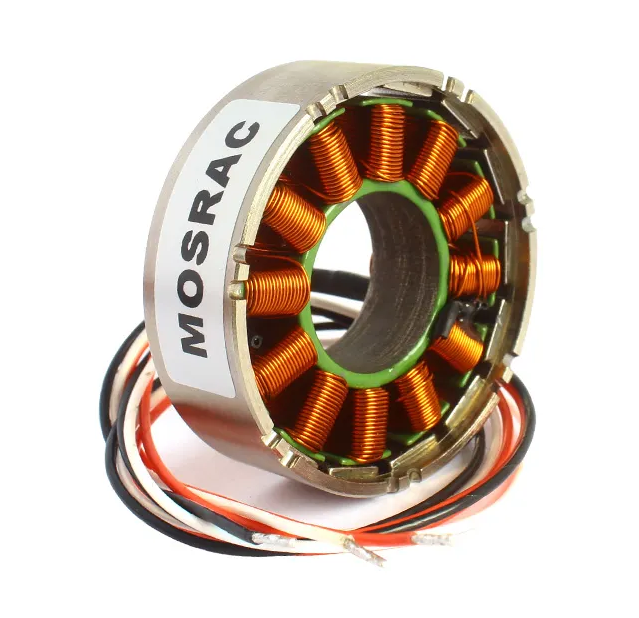
Outrunner Frameless Direct Drive Torque Motor
Let’s go through their core applications in AC & DC Motors:
AC Motors:
▪︎ Induction Motors: In three-phase induction motors, the stator windings create a rotating magnetic field that induces current in the rotor windings, generating torque. The rotor windings can be either squirrel cage or wound rotor type, depending on the motor's application.
▪︎ Synchronous Motors: The stator windings supply alternating current to create a synchronized rotating field, while the rotor windings receive DC excitation to maintain synchronization with the stator field.
DC Motors:
▪︎ Brushed DC Motors: The stator windings serve as the field windings, generating the stationary magnetic field, while the rotor windings (armature) receive current through carbon brushes and a commutator, producing torque.
▪︎ Brushless DC Motors (BLDC Motors): The stator windings are connected to an external driver circuit, while the rotor consists of permanent magnets, eliminating the need for rotor windings. This makes BLDC motors highly efficient and maintenance-free.
Armature vs. Field Windings
Armature windings are responsible for carrying current and interacting with the magnetic field to generate motion. These windings are generally found in DC motors, synchronous motors, and alternators.
▪︎ Function: The armature winding is where the electromotive force (EMF) is induced, converting electrical energy into mechanical energy in motors or vice versa in generators.
▪︎ Current Flow: In DC motors, armature windings receive current via the commutator and brushes, producing torque as they interact with the field windings.
▪︎ Construction: The windings are typically arranged in lap winding or wave winding configurations, depending on the motor's voltage and current requirements.

3D View of a disassembled DC Motor
Field windings generate the magnetic field that interacts with the armature winding to produce motion in motors or induce voltage in generators.
▪︎ Function: These windings either produce a fixed magnetic field (in DC motors) or a rotating field (in AC synchronous machines).
▪︎ Excitation Method:
▪︎ In separately excited motors, the field windings are powered by an external source.
▪︎ In self-excited motors, the field winding is connected to the armature circuit.
▪︎ In permanent magnet motors, the field winding is replaced by permanent magnets, eliminating the need for external excitation.
▪︎ Efficiency Considerations: Proper field winding design enhances motor efficiency, reducing heat losses and optimizing power output.
Recommended Reading: What is a BLDC Motor? A Comprehensive Guide to Brushless DC Motors
Types of Motor Windings
Motor windings play a crucial role in determining the efficiency, torque characteristics, and performance of electric motors. Different winding configurations are used to optimize power transmission, reduce energy losses, and enhance motor stability.
The primary types of motor windings include concentrated windings, distributed windings, lap windings, and wave windings. Each type is designed to meet specific performance requirements in industrial motors, alternators, electric vehicles, and automation systems.
Below, we provide a detailed technical breakdown of each motor winding type, its structure, benefits, and applications.
1. Concentrated Windings
Concentrated windings consist of coils wound tightly around a single stator tooth without spreading across multiple slots.

Concentrated Winding in Frameless Direct Drive Torque Motors
This winding configuration focuses on magnetic flux, creating a stronger localized field and improving the power density of the motor.
▪︎ Simplified Structure: The winding is confined to one tooth, making the manufacturing process more straightforward.
▪︎ High Magnetic Coupling: Enhances torque generation due to the concentrated flux.
▪︎ Compact Design: Reduces material usage, making it ideal for space-constrained applications.
Let’s go through the advantages of concentrated windings:
▪︎ Higher Efficiency in Compact Motors: Reduced copper losses lead to improved energy efficiency.
▪︎ Simplified Manufacturing & Cost Savings: The straightforward design allows for faster production and lower material costs.
▪︎ Enhanced Torque Density: The focused magnetic field results in higher torque output for small, high-speed motors.
Below are the applications of concentrated windings:
▪︎ Stepper Motors: Used in precise motion control applications like robotics and automation.
▪︎ Axial Flux Motors: Applied in electric vehicles (EVs) and aerospace motors for high efficiency.
▪︎ High-Speed Applications: Suitable for fans, blowers, and compact servo motors.
2. Distributed Windings
Distributed windings spread the coils over multiple stator slots, covering more of the core’s circumference.
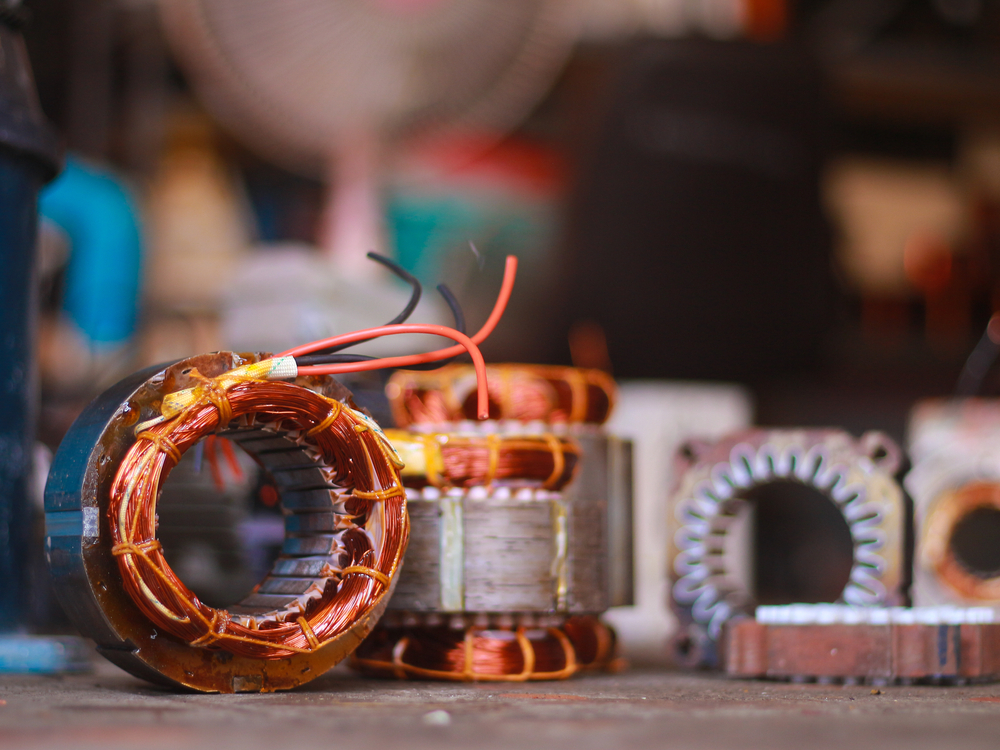
Distributed Winding in an electric Induction Motor
This winding arrangement produces a more uniform magnetic field, leading to smoother torque generation and reduced harmonic distortion.
▪︎ Even Magnetic Field Distribution: Reduces unwanted vibrations and noise.
▪︎ Better Cooling Performance: Improved thermal management due to greater surface area contact.
▪︎ Reduced Harmonics & Cogging Torque: Leads to better efficiency and reliability in large motors.
Let’s understand the benefits of distributed windings:
▪︎ Lower Harmonic Distortion: Minimizes losses and enhances power quality.
▪︎ Superior Torque Production: Generates a more stable magnetic interaction for smooth motor operation.
▪︎ Better Heat Dissipation: Reduces thermal stress, increasing motor lifespan.
Below are the applications of distributed windings:
▪︎ Industrial Motors: Used in large AC induction motors, servo motors, and synchronous machines.
▪︎ Alternators & Generators: Essential for power generation in renewable energy and automotive alternators.
▪︎ Large-Scale Electric Machines: Found in traction motors, wind turbine generators, and high-performance drives.
3. Lap Windings
Lap windings are designed so that each coil overlaps with the adjacent coil, forming multiple parallel paths for current flow.
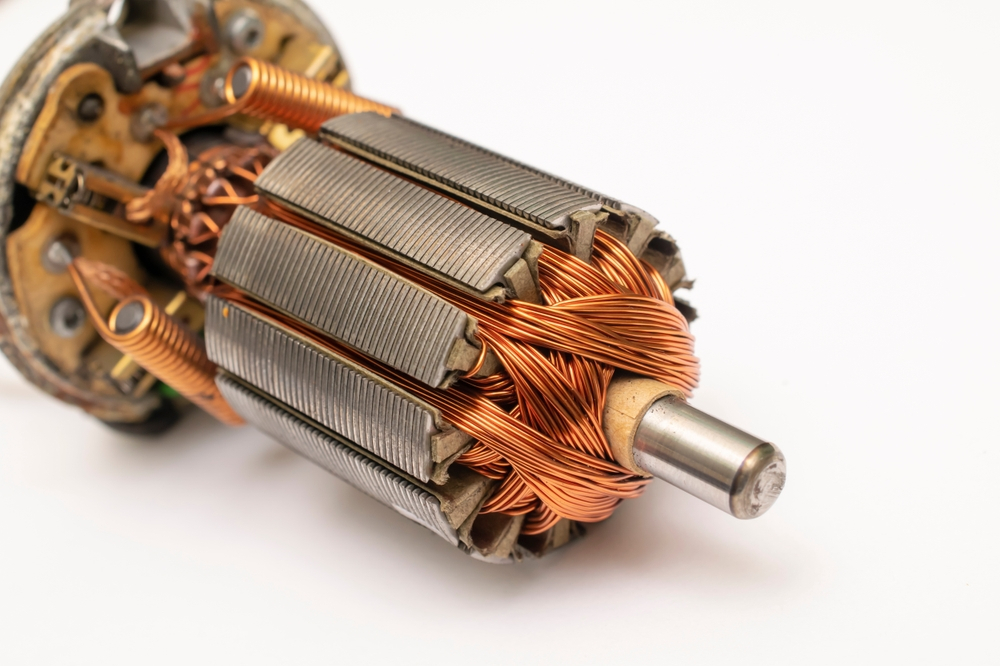
Lap Winding in an electric motor
This configuration is common in DC motors and generators, where high current-handling capacity is required.
▪︎ Parallel Circuit Paths: Each coil is connected in such a way that multiple parallel paths exist for the current.
▪︎ Higher Current Capacity: The design allows the motor to handle large current loads efficiently.
▪︎ Multiple Poles: Supports high-torque applications by evenly distributing current flow.
Let’s go through the electrical properties of lap windings:
▪︎ Best for High-Current, Low-Voltage Applications: Ideal for industrial power systems that demand high output current.
▪︎ Improved Fault Tolerance: Parallel paths prevent total failure if one winding is damaged.
▪︎ Optimized for Heavy-Duty Usage: Well-suited for continuous-duty industrial motors.
Below are the common uses of lap windings:
▪︎ DC Motors: Used in industrial-grade electromechanical drives.
▪︎ Generators: Found in power plants and automotive alternators for consistent voltage output.
▪︎ Traction Motors: Employed in railway engines, electric locomotives, and mining machinery.
4. Wave Windings
Wave windings consist of coils arranged in a continuous, wave-like pattern around the armature, ensuring that each winding interacts with multiple magnetic poles.
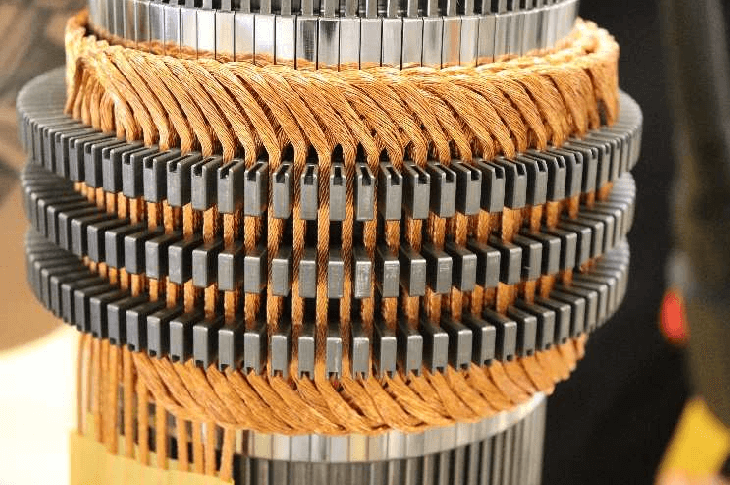
Continuous Wave Winding Process
Unlike lap windings, which use multiple parallel paths, wave windings follow a series configuration, making them ideal for high-voltage applications.
▪︎ Single Continuous Path: Conducts current sequentially across all poles before returning to the starting point.
▪︎ Series Connection: Increases voltage while keeping current low.
▪︎ Reduced Conductive Losses: Less winding material is needed compared to lap windings.
Electrical Properties of Wave Windings
▪︎ Best for High-Voltage, Low-Current Applications: Suited for motors requiring consistent electrical efficiency.
▪︎ Higher Voltage Generation: Increases the output voltage without increasing current.
▪︎ Lower Copper Losses: Results in reduced heat generation and longer motor lifespan.
Below are the common uses of wave windings:
▪︎ Large Industrial Motors: Used in high-voltage AC motors and synchronous generators.
▪︎ High-Power Generators: Found in power stations, hydroelectric generators, and large-scale alternators.
▪︎ Railway & Transportation Systems: Applied in electric train propulsion systems and metro networks.
Selecting the appropriate motor winding type depends on several factors, including power requirements, efficiency considerations, and application-specific needs!
Recommended Reading: Frameless Motor VS Brushless Motor: Which is Right for You?
Advanced Winding Technologies
Motor winding technology has evolved to enhance efficiency, thermal performance, and power density in modern electric motors.
Advanced winding techniques such as hairpin winding, random vs. form wound windings, and specialized coil winding methods play a crucial role in improving motor reliability and operational efficiency.
Below, we discuss the latest motor winding technologies, their benefits, and how they are transforming the industry.
5. Hairpin Winding Technology
Hairpin winding is a modern motor winding technology that uses rectangular, pre-formed copper conductors instead of traditional round wire windings. These "hairpin-shaped" conductors are inserted into the stator slots, welded at their ends, and coated for insulation.
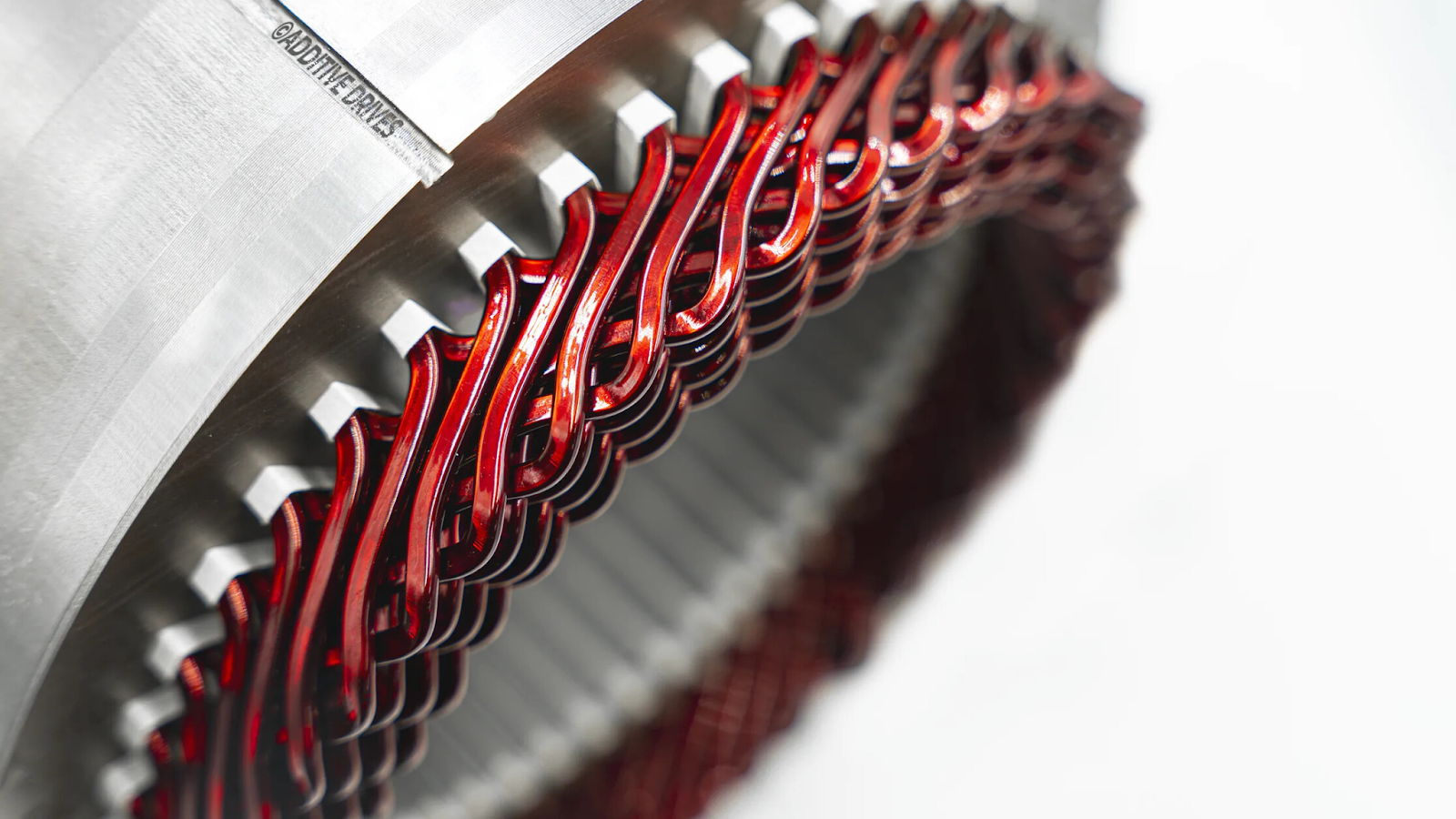
Hair Pin Motor Winding
This design allows for higher slot fill factors, which leads to lower resistance, improved power density, and better heat dissipation.
Let’s go through these performance benefits of hairpin winding:
▪︎ Higher Efficiency: Due to the superior copper fill ratio, hairpin windings reduce electrical resistance, leading to lower energy losses and improved efficiency.
▪︎ Better Thermal Management: The use of rectangular conductors provides larger contact areas, which enhances heat dissipation and extends motor lifespan.
▪︎ Increased Power Density: Hairpin windings allow for more compact and powerful motor designs, reducing the overall weight and size of the motor.
▪︎ Reduced Manufacturing Variability: Unlike traditional winding methods, hairpin windings are produced with precise automation, ensuring consistent quality and minimizing defects.
Below are the industrial use cases of hairpin winding:
1. Electric Vehicle (EV) Motors – Used in Tesla, BMW, and other automotive manufacturers for high-efficiency traction motors.
2. High-Performance Industrial Drives – Deployed in robotics, CNC machines, and precision automation systems.
3. Aerospace & Defense Applications – Applied in high-power electric propulsion systems and UAV motors.
6. Random vs. Form Wound Windings
Motor winding technologies are generally classified into random wound windings and form wound windings. Both methods have distinct advantages and limitations, depending on the application.
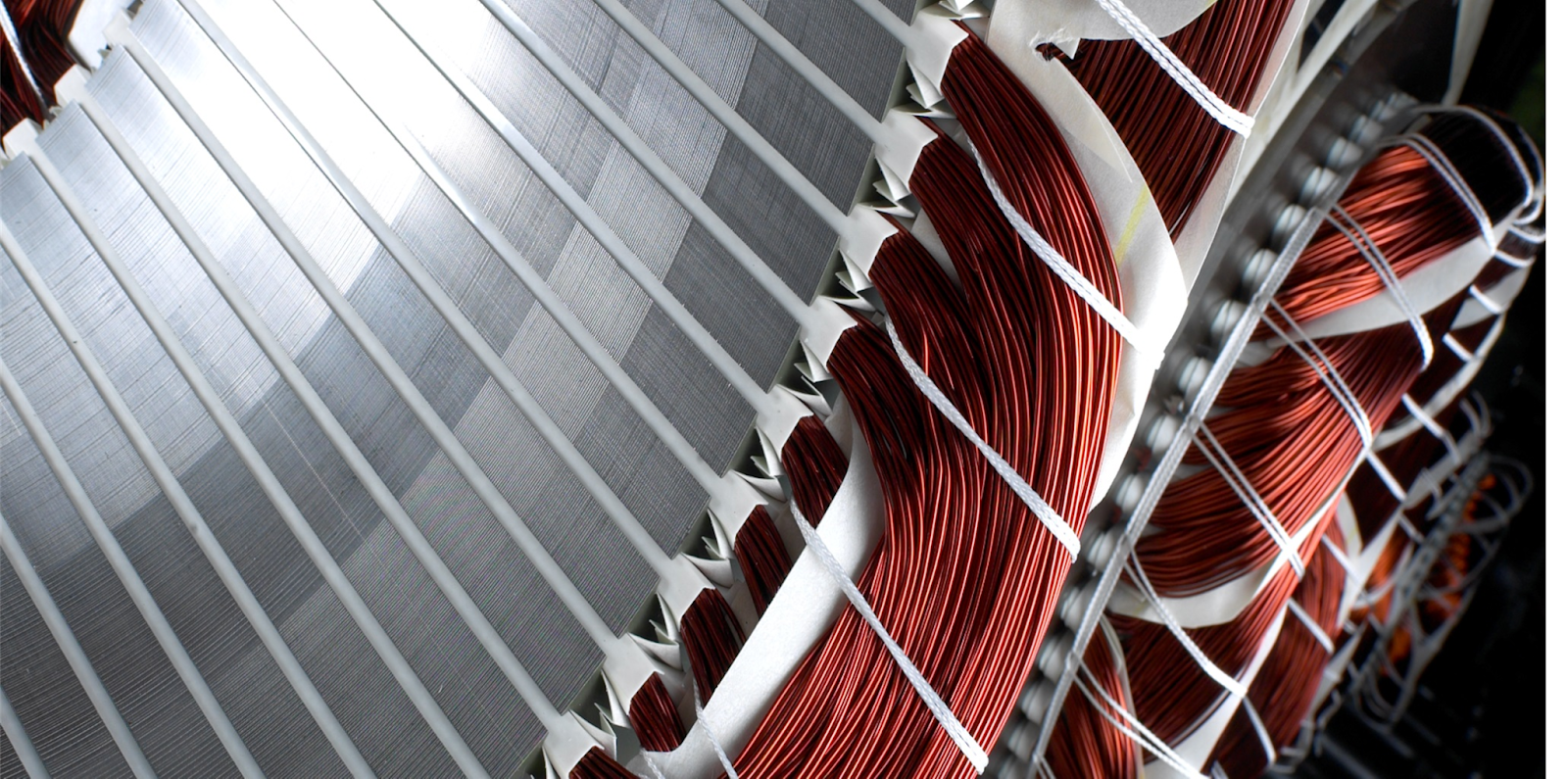
Bar-wound Versus Wire-wound Generators
Random wound windings use unstructured, loosely wound round wires placed into the stator slots. The wires are not pre-formed, allowing for faster and more cost-effective production.
Form wound windings involve pre-shaped coils, allowing for precise and optimized stator slot filling. These windings are tightly packed, reducing electrical resistance and improving insulation.
7. Special Coil Winding Techniques
Certain motor applications require specialized winding techniques to optimize torque characteristics, efficiency, and operational flexibility. Two key specialized winding methods are fractional slot winding and pole-changing winding.
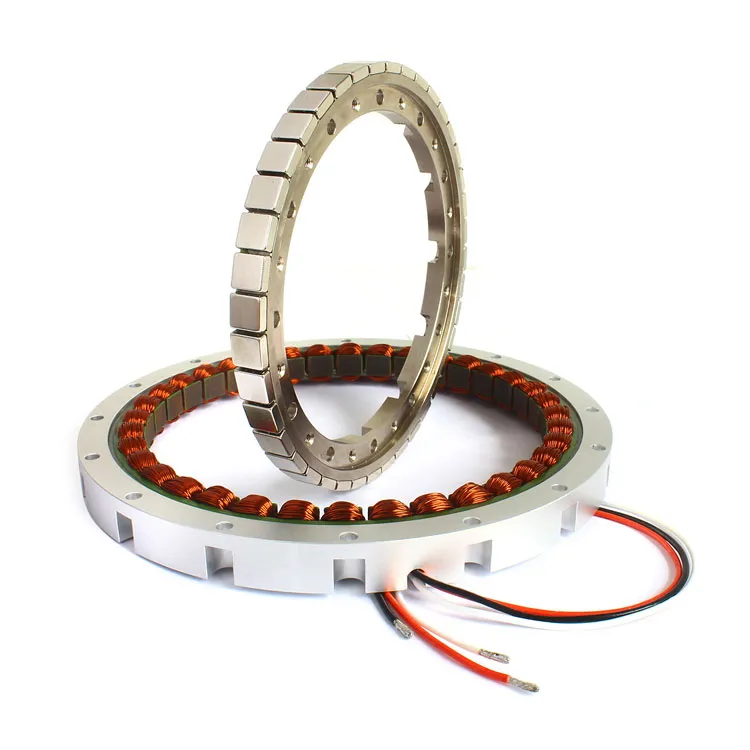
U-Series Brushless Frameless DDR Torque Motor
Fractional slot winding is a specialized winding technique where the number of slots per pole per phase is a fractional value rather than an integer. This results in:
▪︎ Lower Cogging Torque: Reduces torque pulsations, ensuring smoother motor operation.
▪︎ Enhanced Efficiency: Minimizes iron losses and improves flux distribution.
▪︎ Better Noise Reduction: Ideal for applications where low acoustic noise is critical.
Pole-changing winding is a technique used in multi-speed motors, allowing a single motor to operate at different speeds without an external drive.
▪︎ Dynamic Speed Control: Adjusts motor speed by changing the pole configuration.
▪︎ Energy Savings: Reduces energy consumption in fans, pumps, and industrial cooling systems.
▪︎ Versatility: Eliminates the need for variable frequency drives (VFDs) in some applications.
The evolution of motor winding technologies is revolutionizing industries by offering higher efficiency, better heat dissipation, and greater performance durability. Choosing the right motor winding solution is critical to optimizing power output and extending motor lifespan.
Recommended Reading: Motor Pole Count: What It Is & How to Determine It? (+ Tips)
Advantages of Custom Industrial Solutions
In high-performance industrial applications, selecting the right motor winding is crucial for achieving efficiency, torque optimization, and durability. While standard motor windings may meet general requirements, custom winding configurations can significantly enhance motor efficiency, thermal performance, and power density for specific industrial, automotive, and aerospace applications.
MOSRAC offers precision-engineered frameless and DDR (Direct Drive Rotary) motors, designed to integrate seamlessly with various winding configurations. By choosing the optimal motor winding type, engineers can maximize performance, reduce energy consumption, and extend motor lifespan in critical applications.
Frameless motors offer high flexibility, high torque density, and thermal efficiency, making them ideal for applications requiring custom motor winding configurations.

Mosrac Frameless Torque Motors
Key benefits include:
▪︎ Compact Design: No external housing, allowing for customized integration into specialized machinery.
▪︎ High Torque-to-Weight Ratio: Ideal for robotic arms, aerospace actuators, and medical devices.
▪︎ Modular Compatibility: Designed to work with multiple winding configurations for performance optimization.
Direct Drive Rotary (DDR) motors eliminate gear systems, providing:
▪︎ Frictionless, High-Precision Motion: Suitable for robotic applications, industrial automation, and semiconductor manufacturing.
▪︎ Elimination of Mechanical Wear: Extends motor lifespan, reducing maintenance costs.
▪︎ Seamless Integration with Custom Windings: Supports low-cogging, high-efficiency winding solutions.

Frameless Torque Motors & Housed Direct Drive Torque Motors (DDR motors)
DDR motors manufactured by Mosrac include the FE series and FI series, with various size options for different application needs, the OD ranges from 40mm to 375mm.
Looking for high-performance, next-generation motor winding solutions? Contact MOSRAC today to explore our high-torque, high-efficiency motor solutions, or customized motor winding according to your needs!
Conclusion
Motor windings are a fundamental component of electric motor performance, influencing efficiency, power output, and durability. Various winding types, such as concentrated, distributed, lap, and wave windings, serve different applications, from high-torque industrial motors to precision robotics and electric vehicles.
Advanced technologies like hairpin winding and custom-form wound solutions provide significant improvements in thermal management and power density.
Choosing the right motor winding is essential for optimizing performance, reducing energy losses, and improving thermal management.
Frequently Asked Questions
1. What are motor windings, and why are they important?
Motor windings are coils of conductive wire (typically copper or aluminum) that generate the magnetic field necessary for motor operation. They play a crucial role in determining efficiency, torque, and thermal performance.
2. Which motor winding type is best for high-efficiency applications?
Distributed windings offer superior efficiency, reduced harmonics, and better thermal management, making them ideal for industrial motors, alternators, and electric vehicle (EV) applications.
3. How do hairpin windings improve motor performance?
Hairpin windings enhance efficiency, power density, and heat dissipation, making them perfect for high-performance EV motors, industrial automation, and aerospace applications.
Looking for a Custom Solution?
Tell Us about your requirements, and our application engineers will help you find the right solution today!
